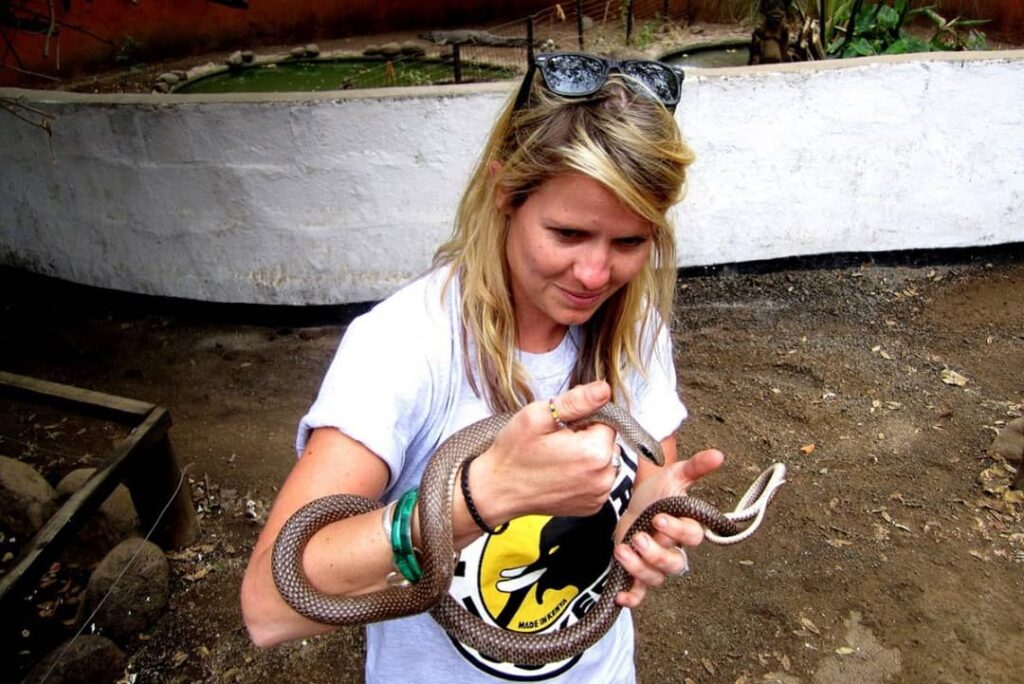Arusha Snake Park Tour
Arusha Snake Park Tour, the day journey from Arusha to Meserani Snake Park, situated 25 kilometers from Arusha’s city center, is commonly referred to as the snake park. It is an ideal location to acquire in-depth knowledge about various reptiles, particularly the many types of African snakes, including the opportunity to interact with live snakes and capture photographs with them. The Meserani Snake Park is located along the route to Serengeti and Ngorongoro National Parks; consider a brief visit before continuing your safari.

What is the admission charge for Meserani Snake Park?
The entry costs for Meserani Snake Park are divided into two categories: fees for foreigners and fees for Tanzanian citizens or indigenous individuals. The charge for foreigners is 20 USD (or forty-six thousand Tanzanian shillings, if you choose to pay in Tanzanian shillings).
Activities to undertake during a Meserani day excursion
Meserani Park Tour: Upon arrival in the park, the tour will commence immediately, as numerous activities are scheduled for you within a single day. Investigate and acquire knowledge on many perilous snake species inhabiting this park. They encompass some of the most perilous snake species globally, including the Black Mamba, Green Mamba, Egyptian Cobra, and Puff Adder, among others. A guide will assist you in identifying various species of snakes and reptiles, and you will have the opportunity to handle the non-venomous snakes present in this park.
Other reptiles inhabit Meserani Park, including crocodiles, which visitors may have the opportunity to feed during designated feeding times. Monitor lizards, tortoises, and several bird species can also be observed here, as they are either orphaned or severely injured and unable to survive independently in the wild.
Day tour from Arusha to Meserani Snake Park
Meserani Snake Park Maasai cultural tour: engage with the renowned Maasai tribe, celebrated both in Tanzania and beyond, which has successfully maintained and preserved its cultural heritage over time. During a tour of Meserani Park, you will have the opportunity to visit the nearby Maasai huts and learn about their culture, lifestyle, and crafts. You will have a personal Maasai tour guide who will escort you on a Maasai cultural tour, including a visit to the Maasai museum and a day journey from Arusha to Meserani Snake Park. You will also visit the Maasai market, comprised of 13 traditional Maasai huts, each stocked with various things crafted by Maasai men and women that symbolize their culture. Various things and gifts can be brought home for your loved ones. The collection includes things such as jewelry, earrings, handbags, Maasai footwear, various painting designs, and more. Take your time to explore these huts and observe the Maasai people within them.

Enjoy a 30-minute camel ride towards the Maasai settlement, where the exquisite environment provides an ideal experience in the afternoon at Meserani Park. Engage in a camel walk while conversing with a Maasai guide, providing an opportunity to learn about various aspects of Maasai culture and acquire knowledge about Tanzania, the Maasai, or Maserati Park.
You will eat lunch at the Snake Park Bar, a renowned establishment within this park, where every item has a narrative associated with it.
Are black mambas present in Tanzania?
The unequivocal response is affirmative; Black Mambas inhabit several locations throughout Tanzania. Black Mambas inhabit both Serengeti National Park and Mikumi National Park. Upon visiting Meserani National Park, one will also encounter both Black Mambas and Green Mambas.
Is Arusha worth visiting?
Indeed, Arusha merits a visit; it serves as the epicenter of tourism in Tanzania. It is not only the gateway to numerous national parks throughout the northern circuit but also has various centers for diverse tourism activities beside the national park. Arusha features Arusha National Park, home to diverse wildlife, Mount Meru for hikers, history centers, and other additional attractions, making it a destination worth visiting.
